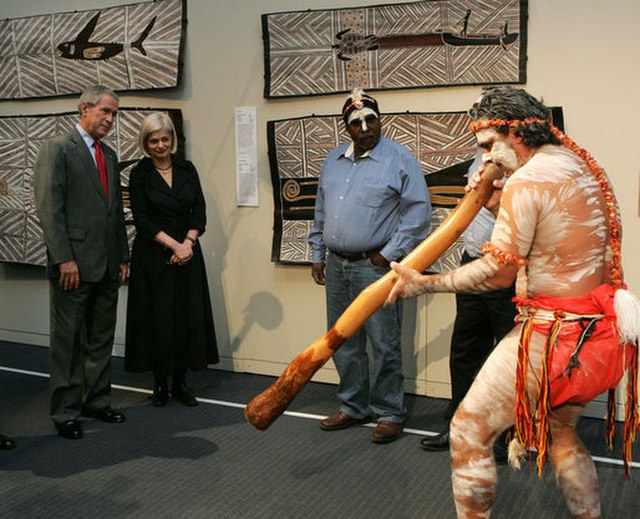Prehistoric music is a term in the history of music for all music produced in preliterate cultures (prehistory), beginning somewhere in very late geological history. Prehistoric music is followed by ancient music in different parts of the world, but still exists in isolated areas. However, it is more common to refer to the "prehistoric" music which still survives as folk, indigenous or traditional music. Prehistoric music is studied alongside other periods within music archaeology.
Entrance of Haua Fteah
The 7 bone flutes found in Eynan-Mallaha
Performance of Aboriginal song and dance in the Australian National Maritime Museum in Sydney
Buskers playing didgeridoos at Fremantle Markets, 2009
Although definitions of music vary wildly throughout the world, every known culture partakes in it, and it is thus considered a cultural universal. The origins of music remain highly contentious; commentators often relate it to the origin of language, with much disagreement surrounding whether music arose before, after or simultaneously with language. Many theories have been proposed by scholars from a wide range of disciplines, though none has achieved broad approval. Most cultures have their own mythical origins concerning the invention of music, generally rooted in their respective mythological, religious or philosophical beliefs.
The monumental Bianzhong of Marquis Yi of Zeng, c. 5th century BCE, from Hubei
Two musicians of the Eastern Han Dynasty (25–220 CE), Shanghai Museum
The Bull Headed Lyre of Ur, found in the Royal Cemetery at Ur, is the best known of the ancient Lyres of Ur
Terracotta statue of a Parthian lute player








